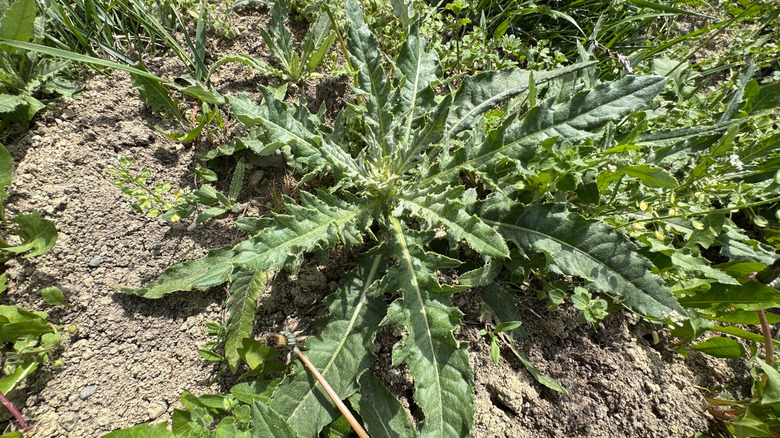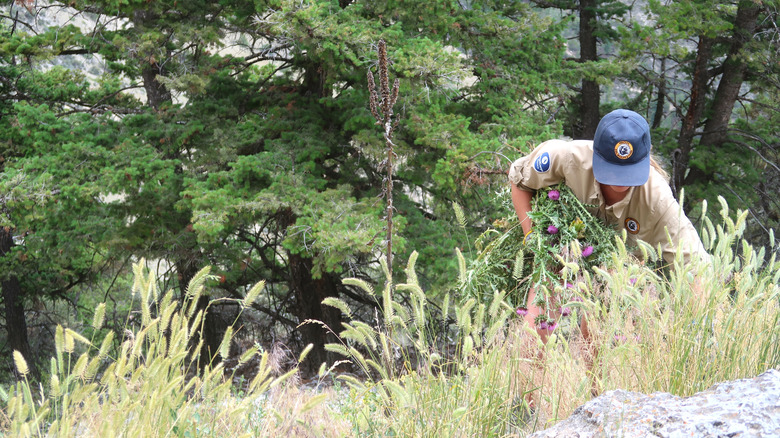The Best Way To Prevent Invasive Thistle During Hot Summer Months
If you've ever gone on a hike and seen a familiar green, spiky-looking plant, you've probably spotted Canada thistle (Cirsium arvense). While it may look harmless, it's an invasive, perennial plant that can be detrimental to wildlife and the environment. It's so aggressive that in some states, like Minnesota, it's prohibited from being sold or propagated. Canada thistle isn't just a problem in the wild; it's also a major threat to your garden. Not only is it poisonous to plants around them, but it can also behave like a leech, draining the nutrients from the soil and weakening everything around them.
If you're growing fruits, vegetables, or any nutrient-rich crops, it's important to keep an eye out for this invasive plant and take action right away if you spot one. Managing it is essential for the overall health of your lawn, backyard, or surrounding habitat, especially during the warmer summer months. Canada thistle grows well in higher temperatures and full sun, but luckily, there are a plethora of methods to ward it off, such as manual weeding, pre-flower mowing, and herbicides. By carefully implementing these strategies, you can successfully prevent invasive thistle from growing.
Strategies to fight off Canada thistle in the summer
One of the most effective ways to deal with this destructive plant is through regular, methodical hand weeding of young Canada thistle at the beginning of summer. By pulling these stubborn thistle weeds by hand the correct way before they form stronger roots, you can drastically reduce the number of plants grown. But if hand weeding isn't your thing, try pre-flower mowing. If you mow Canada thistle in late June, you can drastically decrease the amount of seeds created and reduce its population by mowing on a set schedule of seven to 10 days. When mowing, it's also important to take preventative measures to avoid accidentally spreading its seed elsewhere. This makes cleaning your mowing equipment vital to prevent this from happening.
Another highly effective strategy is to grow dense plants that create less room for root growth. Turfgrass is a great option for this and has some amazing bonuses. Not only does it make a beautiful addition to any scene, but it's also known as a natural pollution filter that traps dust and heat. Additionally, its dense properties create shade from the heat during the summer months, which in turn, will hinder the growth of Canada thistle. To grow your turfgrass properly, make sure to water it with around 1 inch per week.
Lastly, while natural methods are ideal, some situations may call for a chemical approach. One of the most commonly used herbicides for Canada thistle is glyphosate, better known by its brand name Roundup. While this method is effective against Canada thistle, it's important to note that it's controversial and could be linked to cancers like non-Hodgkin lymphoma, so use with caution. Either way, you'll need diligence and patience, but what remains is the fact that you'll be able to banish these thistle weeds from your yard and space for good.

